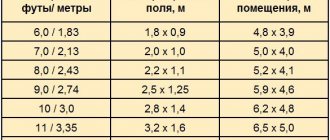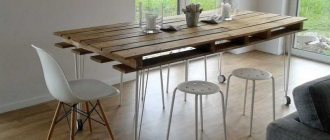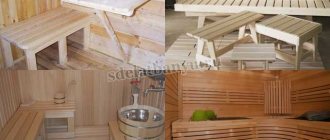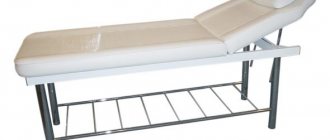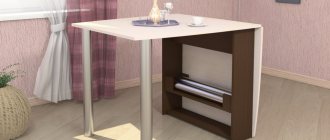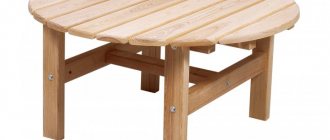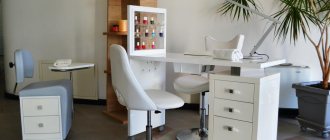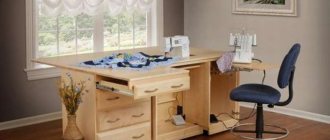Concept and types
The table is a manipulator for fastening the workpiece being processed. Externally, it looks like a plate with the ability to fix the part using:
- mechanical method;
- vacuum method;
- own weight of the workpiece.
CNC drilling machine
Products come with one, two and three degrees of freedom. This means that the feed is carried out along the coordinates X, Y, Z. For drilling flat parts, horizontal movements are sufficient. With a voluminous product or a fixed drill, vertical movement of the table is necessary.
For large industrial drilling installations, long coordinate pads are manufactured. They are equipped with their own mounting frame. Both the part and the processing unit itself are mounted on such a device. The table for small machines is made with fastening to the device or to the surface of the workbench.
To set the table in motion, the design can be:
- mechanical;
- electrical;
- CNC.
The latter type is the most accurate, but the cost of such a device is significant.
Now make the stop
1. Cut out the blanks for support F , front plate G , lower H and upper I parts of the stop according to the specified dimensions. Install a 10 mm thick groove disk into the sawing machine and adjust the longitudinal (parallel) stop for sawing tongues exactly in the middle of the thickness of parts H and I (Fig. 3 and 4). Then cut 5mm deep tongues into these parts and mark the edges that fit against the saw stop. When cutting out the upper and lower tongues on the lower fly, in both cases, guide the workpiece along the stop with the same edge. Now, without changing the settings, cut out the tongue in the support blank.
Pressing the parts with their marked edges against the back side of the pad G, glue the lower H and upper I parts of the stop together, with the lower support F and the pad G. The clamps should compress the gluing in two directions.
2. Glue the front pad blank G to the support blank F (Fig. 4). Make sure the pad is glued to the support at an exact 90° angle. When the glue has dried, glue the lower H and upper I parts of the stop (photo B). Before the glue dries, insert 10mm diameter steel rods into the square holes, pushing them all the way through to remove any excess glue squeezed out from inside.
3. Cut out a 19×10 mm tongue on the front side of the lining G to install the guide aluminum profile (Fig. 4). Then cut a 3x3 mm dustproof fold along the bottom edge of the trim.
4. Saw one end of the assembled stop evenly, and then cut the workpiece into three parts (Fig. 3), obtaining a stop 572 mm long and two extensions of 89 mm each. Then saw off part of the support on the extensions (Fig. 4).
5. Using a flexible template, mark semicircular cutouts on the upper edge of the stop and the rear edge of the support F (Fig. 3). Cut out the cutouts with a jigsaw or band saw and sand smooth. Then drill 6mm holes for the screws that secure the fence to the table and a hole for the drill chuck key in the base where indicated.
6. To install threaded bushings in part I , drill holes with a diameter of 11 mm into the upper square hole of the stop (Fig. 3 and 4) . Apply epoxy glue to the walls of these holes and insert threaded bushings. Once the glue has completely cured, use a 10mm drill bit to remove any excess glue that may have gotten into the square holes for the steel bars. For additional tips on installing threaded bushings, see the “Tip from the Expert.”
Master's advice. Installing threaded bushings
Homemade workshop fixtures often use various screws for fixation or adjustment. In order for them to work in wood and plywood parts, threaded bushings will be required. They are available in different sizes (metric - from M4 to M10). There are two main types - drive-in and screw-in (futorki), as shown in the left photo below.
Use screw-in bushings in softwood and plywood where large external threads easily crush surrounding wood. Simply drill a hole whose diameter is equal to the diameter of the bushing body and screw the bushing into it. In hardwoods such as oak or maple, or when the bushing must be positioned near the edge of a piece and could split the wood, drill a hole slightly larger than the outside diameter of the threads and insert the bushing with epoxy glue into it. To avoid staining the internal thread of the bushing with glue, seal its end (photo above right).
Drive-in sleeves with burrs on the outside are equally suitable for plywood, hardwood and softwood. Drill a hole whose diameter is equal to the diameter of the bushing body and insert the bushing using a clamp or hammer and a block of wood. In cases where the force of the clamping screw pulls the sleeve out of the material (for example, a screw with a hand-grip handle that secures the steel rods of the stop extensions), drill a hole of such a diameter that only the tips of the burrs touch its walls, and insert the sleeve into it with epoxy glue.
Manufacturing of load-bearing elements
The materials for making the table frame are:
- cast iron;
- metal;
- aluminum.
The latter material is used for circuits with light loads and low torque forces. This option is acceptable when drilling wood or plastic.
Drawn aluminum frame profile, mounted on threaded connections. This creates a solid foundation. Advantages of the material:
- low weight;
- accessibility;
- ease of installation.
Many companies produce ready-made kits for assembling tables with your own hands.
Drilling machine with cross table
Cast base structures are often cast iron. Their weight is significant, but the forces they can withstand are quite high. Such tables are used for large production volumes. Installation is carried out on the foundation, permanently.
A welded frame is the best option for both production facilities and home use. The main thing is to reduce the welding stresses of the metal by releasing it when welding with your own hands. Otherwise, when the engine picks up speed, cracks may appear in the frame.
For drilling machines, two table technological schemes are used:
- cross;
- portal
Drilling machine with gantry table
The first is used for bulk workpieces. It makes it possible to carry out other manipulations on the fixed workpiece. With this arrangement, access to the part is provided from three sides.
The portal pattern is used when drilling flat products. It is easier to manufacture and has increased processing accuracy.
How to make a coordinate table for a drilling machine
In this review, the author shows in detail the process of manufacturing a coordinate table for a drilling machine. It is needed for the most accurate positioning of the workpiece during drilling.
The drive in the coordinate table is mechanical. This is the simplest and most affordable option for most people.
The first step is to prepare two rods (can be removed from car parts) and two bushings. You will also need a screw with nuts.
We recommend reading the article: how to make a cross coordinate vise for a drilling machine.
Next, you will need to cut two pieces of the corner and drill holes in them. We insert two rods and a screw into the drilled holes. A metal plate must be welded to the bushings.
Main stages of work
At the next stage, you need to make another carriage with guides. In this case, the table can be moved in two coordinates, which is very convenient.
The author attaches flywheels to the lead screws. You can buy them ready-made or make them yourself.
Next you need to connect the two platforms perpendicular to each other. After this, the author begins making the table itself. For this, steel plates are used.
At the last stage, all that remains is to assemble and paint everything. You can watch the video for details on how to make a coordinate table for a drilling machine.
Rate this post
Source: https://sdelairukami.ru/kak-sdelat-koordinatnyj-stol-dlya-sverlilnogo-stanka/
Selection of guides
The accuracy of processing depends on the correct selection and fastening of the table surface movement guides. Rail and cylindrical elements are used. They are produced with a carriage superstructure and mounted bearing units.
The choice of table guide type depends on the type of drive. The part in question works to overcome the friction force. If high precision in movement is required, it is better to choose plain bearings. Rolling bearings reduce friction but create a lot of play.
Depending on the type of carriage, the guides are:
- with an enlarged flange, for fastening to the bottom of the table;
- Wafer type for conventional mounting to top threaded holes.
If you make it yourself, you can order rails with a stainless steel coating. They have an increased service life and longer abrasion resistance.
Useful tips
The instructions, which describe how to make a coordinate table with your own hands, explain the process step by step. However, minor problems may arise during operation. To avoid them, it is recommended to adhere to safety precautions and take into account the advice of experts. The most important of them:
- if you plan to process plastic or wood, then the base of the manipulator can be made of aluminum;
- with device dimensions of 35 x 35 cm, it is advisable to adjust the total length of the guides to 30 cm;
- to protect the device from chips before installation, it is recommended to place a piece of plywood under it;
- when using cylindrical guides, there is no possibility of connecting a lubrication supply system, so all parts must be lubricated manually;
- When assembling, it should be taken into account that the plain bearing provides better machining accuracy, while its counterpart (friction bearing) leads to some play.
Making a table for a laptop with a cooling system with your own hands
To carry out welding work, safety precautions must be observed. It involves the use of special clothing, a protective mask (shield), suede or tarpaulin gloves. The room in which the assembly is carried out must be ventilated or have a high-quality exhaust hood. When working outdoors, a canopy is required. Near the workplace, means and materials must be prepared to extinguish a possible fire.
The manufacture of a simple type coordinate manipulator can be mastered by a master with welding skills . It is not difficult to obtain a reliable and convenient product if you strictly follow the conditions of the drawing and the assembly algorithm. The home device allows you to engage in small-scale production of metal, wood, and plastic parts. The service life of such a device depends entirely on the quality of installation and the volume of drilling and milling work performed.
This is interesting: Design features of argon arc welding machines
Types of gears for table movement
With a small tabletop machine, the table is moved mechanically. But the greater the speed, accuracy and performance required, the more carefully the type of drive is selected. Electric motors are mainly used.
The essence of the unit’s operation is to convert the rotational work of the engine into translational motion of the table plane. There are three types of transmissions:
- rack and pinion;
- belt;
- ball screw.
The choice of node type is made based on:
- workpiece movement speed;
- machine engine power;
- required processing accuracy.
Machining accuracy at various transfer units
| Type of transmission mechanism | Accuracy Rate |
| Ball screw | 6-12 microns |
| Rack and pinion | up to 10 microns |
| Toothed belt | 50 … 100 µm |
Advantages of Ball Screw:
- possibility of high-precision processing;
- small backlash;
- smooth movement of the table;
- quiet operation;
- ability to take heavy loads.
Ball Screw Drawing
A significant disadvantage is the limited feed speed. The decrease in speed is especially noticeable when the propeller length is more than 1500 mm. Approximate speed calculation: for a 1 kW drive, the rotation speed is 3000 rpm. With a screw pitch of 10 mm, the transmission speed is 0.5 m/sec. In this case, 3 m will be covered in 6 seconds.
Another disadvantage is the high cost. You can reduce the cost of the project by using a connection with a screw and nut. In this case, it is necessary to ensure constant lubrication of the unit.
In new generation drilling machines, lubrication of the movable mechanisms of the coordinate surface is carried out automatically. The device contains sensors for monitoring the temperature of important parts.
The rack and pinion transmission ensures high speed and sufficient accuracy. The disadvantage is the high degree of play when transmitting forces from the drive.
Installing a belt is the most budget-friendly and common method when creating a table with your own hands. The low cost of belt drive and feed speed up to 1 m/s is compensated by the following disadvantages:
- rapid wear;
- loss of tension due to stretching;
- possibility of breakage during acceleration;
- low accuracy of work.
When purchasing a coordinate table for drilling or do-it-yourself installation, you must take into account the working conditions. The ratio of all mechanisms in terms of parameters: workload, service life, heating and cooling will give a good result during operation. This is especially important when making it yourself from scrap materials.
Advantages and disadvantages of self-production
A coordinate table is an additional structure to a milling, drilling metal or woodworking machine. Thanks to it, you can increase equipment productivity by reducing the labor intensity of the parts processing process. The workpiece is simply fixed on the working surface and can move smoothly along a given path.
Homemade coordinate tables have the following advantages:
- small dimensions;
- simple design form;
- controlled mechanically;
- used in handicraft production.
Their main advantage is saving money. Making such a design from scratch will cost much less than buying a factory-made manipulator. Of course, there are a number of difficulties when making it yourself.
A suitable drawing is needed, according to which the required trajectory of the workpiece will be set. If there is no someone else’s experience, then you will have to create it yourself, but any error when drawing a diagram will make itself felt during work.
In addition, a homemade table is only suitable for small-scale production, since the simplest homemade mechanisms wear out much faster than factory ones.
For mass production of parts and their processing, only a factory model of a coordinate table is suitable.
Simple design form
Small dimensions
Mechanical control
Saving money
When choosing a design, you need to decide on its dimensions. If equipment that processes a part will be installed on a coordinate table, then its dimensions must be taken into account. If it is needed to fix the workpiece, it is mounted on the frame of the drilling equipment, and its width and length will be about 35 x 35 cm.
Tables are also distinguished by the type of fastening:
- When making a coordinate table with your own hands, the structure is equipped with a mechanical fastener. This is the simplest solution in terms of implementation, but it has a number of disadvantages. For example, it often leads to processing errors, and there is a risk of deformation of the product surface.
- Vacuum fastening is considered the best option. With its help, precise positioning of the workpiece on a horizontal plane is ensured. When an air stream is supplied into the gap between the tabletop and the workpiece, the pressure in this area changes. Thanks to this, it is possible to perform processing more efficiently (without mechanical damage to the product).
- Workpiece weight clamping is suitable when using a drill press to machine heavy parts. Due to its mass, the base product remains in the same place even with strong impact.
The functionality of the table depends on the number of degrees of freedom:
- If there is only one, then the workpiece can only be moved in one direction (this is a good option for processing flat products).
- If there are two degrees, it becomes possible to move the workpiece along X and Y coordinates.
- If there are three of them, then the part can move up, down and along the Z coordinate.
If the table is made for home production and processing of parts, then using two degrees of freedom is more than enough.
When making a coordinate table with your own hands, it is important to decide for what purpose it will be used.
The parameters of the manipulator are selected in accordance with the dimensions, weight and shape of future workpieces. To work with various parts from metal and wood, a complex multifunctional mechanism is made.
Usually, home craftsmen have enough capabilities of a small-sized table with mechanical fasteners and two degrees of freedom.
Mechanical
Vacuum
Fastening under the weight of the workpiece
The durability of the structure and cost depend on the material of the product. You should immediately decide what type of table it will be - steel, aluminum or cast iron. The second important step is to decide on the control mechanism. You should also decide whether the drive should be mechanical or electric. The third step is to select guides. This will affect the processing accuracy of the workpieces.
Base
The following materials are used for the base:
- Cast iron. Expensive, heavy material turns out to be very fragile in operation, so it is used extremely rarely in the production of a drilling machine.
- Steel. The material is the most highly durable and durable. Its main drawback is the cost. Not every master will be able to purchase it.
- Aluminum. Light and soft material is easier to work with. It is not as expensive as steel. But it is not suitable for making a large-sized table, since it will not withstand the heavy weight of large workpieces. This is an ideal option for creating mini-equipment.
If the master processes metal workpieces, then it is better to make the table from steel or cast iron. True, you should immediately evaluate your costs: perhaps purchasing a ready-made manipulator will cost less than expensive hardware. An aluminum tabletop is suitable for working with wood or plastic.
Cast iron
Steel
Aluminum
The drive is a control mechanism with which the coordinate table will change its position. It happens:
- Mechanical. The easiest way is to make it yourself. It allows you to significantly reduce the cost of the table. The basis is a conventional screw or belt drive - this is enough to set up small-scale production. Mechanics are not capable of providing 100% accuracy, and this is its clear drawback.
- Electric. It guarantees zero error when performing work operations, but it is very difficult to do it yourself. Often found in factory models of tables. If there is no own power source near the workplace, this option will not work.
Models with CNC (computer numerical control) should be included in a separate category of coordinate tables.
This is high-tech equipment that is used by large enterprises for production in huge volumes.
Their main advantages: good performance, as well as complete or partial automation of the process. Disadvantages: high cost, such a drive is not suitable for some parts.
Mechanical Electrical CNC
The accuracy of the workpiece processing depends on these elements, so they need to be selected correctly. Among those that you can do with your own hands, the following are distinguished:
- Rail. Rectangular guides are considered structurally more advanced. When using them, lower friction losses are observed and serious errors are avoided. It is possible to connect a lubricant supply system.
- Cylindrical. The use of rounded guides is fraught with high heating due to friction. They are suitable for machines of the so-called small category, but you will have to lubricate all the mechanisms manually.
The guides are made with a carriage and bearing units. The use of plain bearings will ensure high precision machining of the part. The use of a rolling shaft support will reduce friction and extend the service life of the manipulator.
The rolling bearing can cause noticeable play, which reduces the accuracy of the workpiece.
Drawings and examples of homemade models
Production of homemade versions
When manufacturing, you should initially select the material of manufacture:
- Cast iron is an expensive, heavy, brittle material. It is quite rarely used in the production of a drilling machine.
- Steel is a strong, hard, durable metal, which also has a fairly high cost. Steel can be called the most attractive material.
- Aluminum is a light, fusible, but expensive and soft material. It is quite easy to use in the manufacture of any machine parts. As a rule, mini equipment is created using this alloy.
The above materials are selected for a full or mini machine.
Review and comparison of factory models
| Model | KT70 | KT150 | G-5757 | KRS-475 |
| Table dimensions, mm | 200*70 | 200*200 | 312*140 | 475*155 |
| Longitudinal movement, mm | 134 | 150 | 203 | 330 |
| Transverse movement, mm | 46 | 150 | 125 | 150 |
| Vernier division, mm | 0,05 | 0,05 | 0,02 | 0,02 |
| Weight, kg | 1,14 | 4,9 | 17 | 23,5 |
| Price, rub | 8046 | 16510 | 11900 | 14000 |
KT70
KT150
G-5757
KRS-475
Manufacturing instructions
Once the type of material and type of construction have been selected, they proceed directly to work. At the first stage, it is necessary to draw up an accurate drawing indicating the dimensions of all parts. If there is no ready-made scheme, you should develop it yourself. The final result is largely determined by the accuracy of the location of the parts relative to each other. The process of assembling a coordinate table with a mechanical drive consists of the following steps:
- the main assembly is welded from a metal profile 2 mm thick;
- check the geometry of the cross and clean the seams with a grinder;
- a block of guides is assembled on the welded central unit (travel is 94 mm);
- nuts of size M10 are installed inside the profile;
- a handle with a bearing is assembled on a threaded rod (M10);
- weld the base from a corner having a U-shaped configuration;
- screw all parts onto the built-in nuts;
- lubricate moving elements with technical oil;
- install the device on the bed of the milling machine.
The manipulator structure should be assembled on an absolutely flat surface.
Step-by-step algorithm for manufacturing a household table with a mechanical drive
To make a coordinate table with the simplest mechanical drive, you must follow the instructions:
- It is necessary to make the central unit of the table in the form of a cross from metal profiles 20 x 20 cm (2 mm thick). It must ensure the stability of the entire structure, so all parts are welded.
- On the surface of the finished cross, assemble carriages with a stroke of 94 mm.
- File the profiles and then insert M10 nuts into them.
- Using M10 studs, assemble the handles with the bearing assembly.
- Next, you should weld two U-shaped bases from the corner, and then assemble the entire structure using bolts that were screwed into the previously pressed nuts.
- Wipe all components, as well as moving parts, with lubricant.
- The assembled table must be attached to the drilling machine bed.
To protect the lubricated structural elements from chips or other waste when processing the workpiece, it is advisable to lay plywood between the coordinate table and the machine. The dimensions of the finished manipulator will be 35 x 35 cm, and the thickness of the product will be 6.5 cm. It is desirable that the total length of the guides be about 30 cm.
Make the central unit of the table in the form of a cross
Assemble the carriages on the surface of the finished cross
File the profiles, insert the nuts
Assemble the handles with the bearing assembly on the studs
Weld two U-shaped bases from a corner
Assemble the entire structure
Wipe all components and moving parts with lubricant.
Attach to drill press bed
